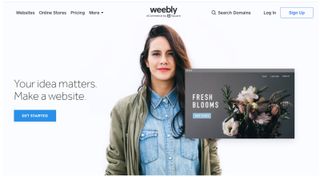@andy_wickes: How do you convince sceptical clients that UX is worth investing in?
@kevinmhoffman: I don’t really think of the problem that way. If a prospective or current client presents a problem and I see a natural fit for a particular research, analysis, or design technique, I manage expectations by identifying benefits of the technique rather than describe the technique itself. The more I can communicate those benefits in the natural vocabulary of the other party, the better, but once I’m familiar with the basic chess pieces of the problem, plain english usually works pretty well.
Here are a few examples from past experience. A client is convinced that using a “special, uncommon version of a word” will reinforce their brand in the site navigation. Let’s run search metrics to see how many people they lose if they take that approach. A client is convinced that people won’t make a donation because the button is too small? Let’s test that to make sure, because losing web donations translates to an exact budget line they depend on. A client is having a problem aligning department expectations around a large project? Let’s get together in a room and do some focused work together, but let’s not call it a “UX Workshop.” Let’s just call it a “productive meeting.”
@angelacolter: What prompted this interest in meeting design? Why shouldn't we boycott all meetings? And who is Keyboard Man?
@kevinmhoffman: I wanted to improve certain types of meetings in our own design process, and I searched the web for the term “Meeting Design”. No-one seemed to be using the term, so I decided to combine a lot of existing disciplines and techniques to start to develop a good spectrum of ideas that fit the label. Strategic thinking about meetings can be traced back to the 1970s, and there are a number of books that have been published, starting with How Meetings Work by Doyle and Strauss in 1976, all the way to Gamestorming by Gray, Brown, and Macanufo in 2010. As I explore related disciplines and their tangents, I hope to assemble a good compendium of proven approaches, whether they are based on other great thinking or a few of my admittedly rare, but decent ideas.
Boycott meetings? Why shouldn’t we all boycott cars? Cars do bad things. Also, sometimes I don’t like food that makes me fat. Let’s boycott hamburgers and milkshakes. Wait, that sounds like a massive amount of work. Let’s just be smarter about how we design these things. Let’s design better, safer cars. Let’s design diets that allow us to enjoy things that taste great. Meetings can be a flawed tool, so lets’s use some design thinking to make them better.
Keyboard Man is a character I pretend to be when I host karaoke events. But more than that, he’s a lifestyle. He likes to present class by dressing the part, but make things a little awkward. And he’s mainly for adults; kids, don’t try this at home.
@bil2k: Have you dealt with the challenges of improving UX in legacy environments such as old enterprise apps and if so, what are your reflections on it?
@kevinmhoffman: Yes. I would characterise that as drawing a lot of lines in the sand, then erasing those lines, and redrawing them. Then repeat.
@idanhart: What are your thoughts on designers knowing how to code?
@kevinmhoffman: I heavily endorse lifelong learning, but not everyone can get to a point where they are “knowing.” My opinion is that whatever gets results is the best way to do something.
If you have found a group of people that gets results by combining juggling with aqueducts, I could care less who is doing the juggling and who is doing the, uh, “aqueducting,” as long as the person doing each thing respectively knows what they are doing, and they can speak each others language with sufficient accuracy to get things done.
If you are a great designer, and you know how to code, that’s fantastic. If you are a great designer, and you know a great coder, and you get along and do great work together, that’s awesome. Who am I to say “fantastic” is better than “awesome"?
@jamesdeer: What steps do you take to ensure your UXD integrates with content strategy and vice versa?
@kevinmhoffman: Identify dependencies between the two and make sure I have sufficient time to allow one to feed the other. For example, I want audits and inventories early and often, so I can develop a robust understanding of the current content situation before developing any proposed site structures. I also want to know final site structures and labels are well aligned with the content production capabilities and the current (or proposed) messaging architecture, so if and when that information exists, I try to integrate that knowledge into our iterative process for a particular deliverable, when possible.
@Visrez: What is the most recurring UI problem you see constantly on sites?
@kevinmhoffman: Here’s a few that I see, in no particular order:




